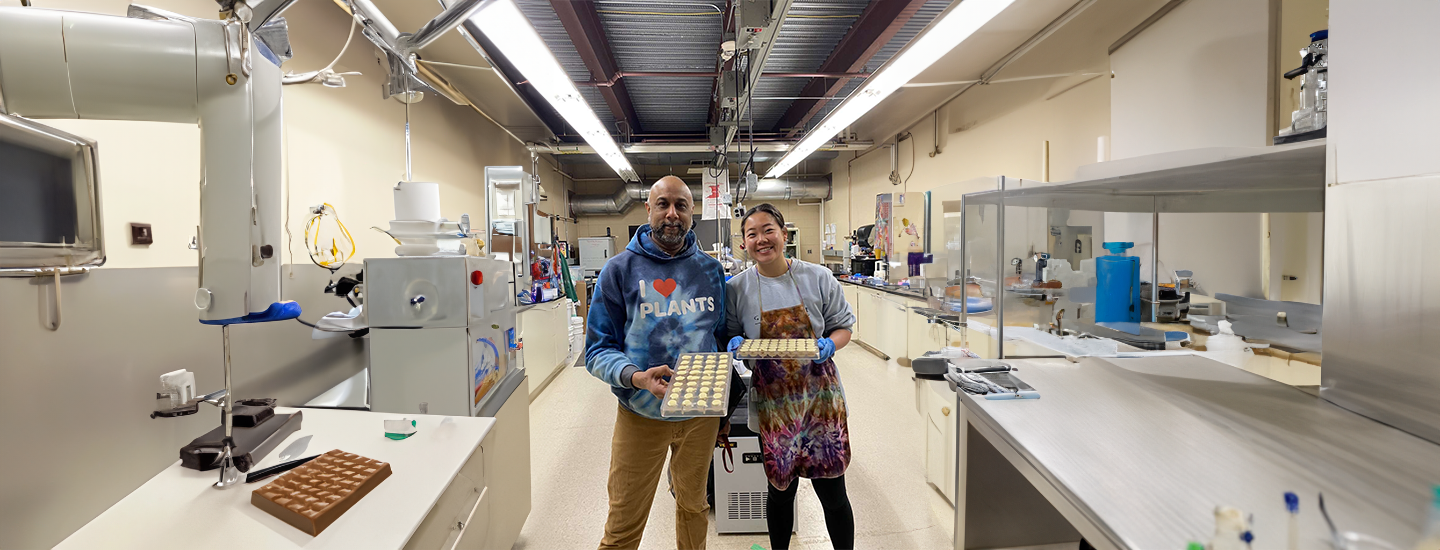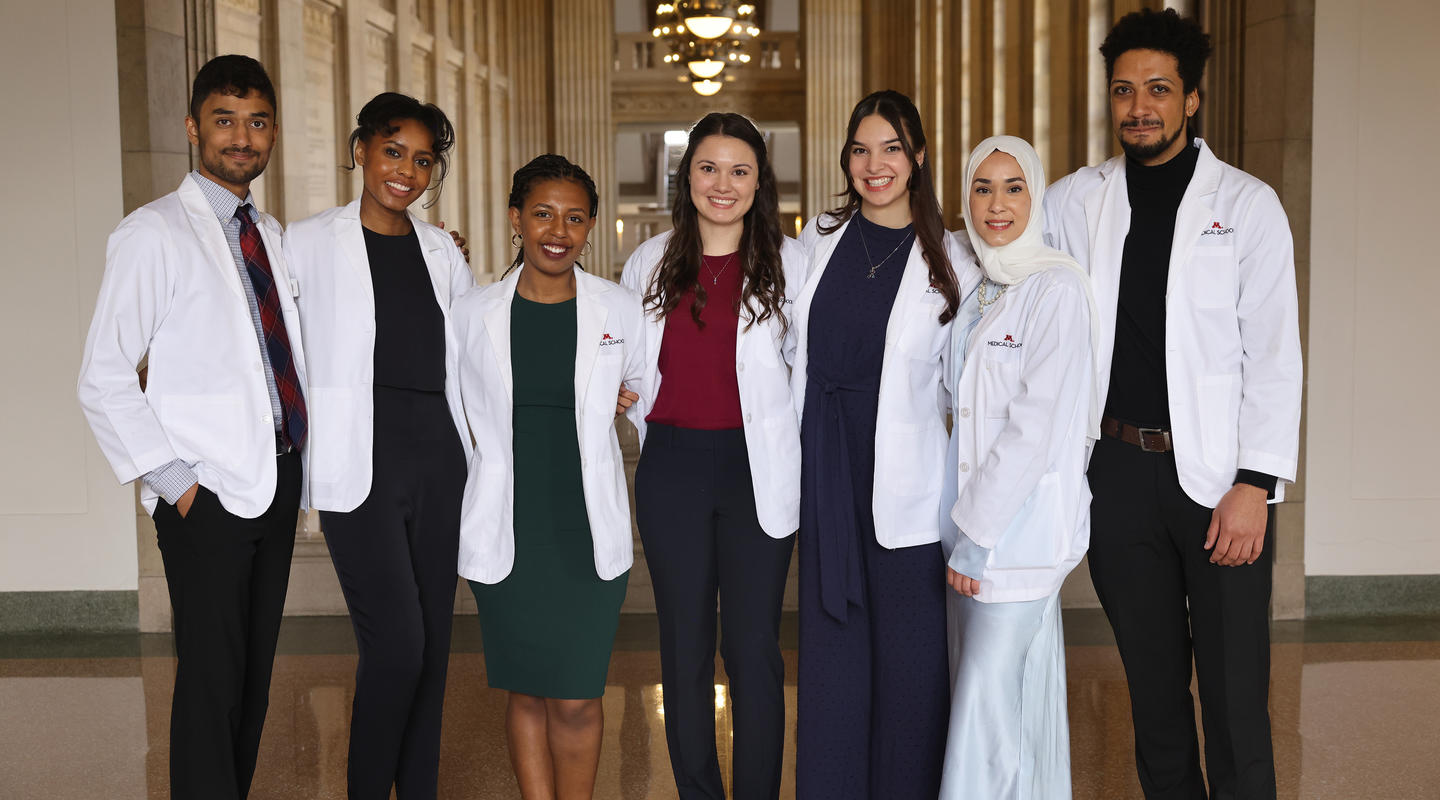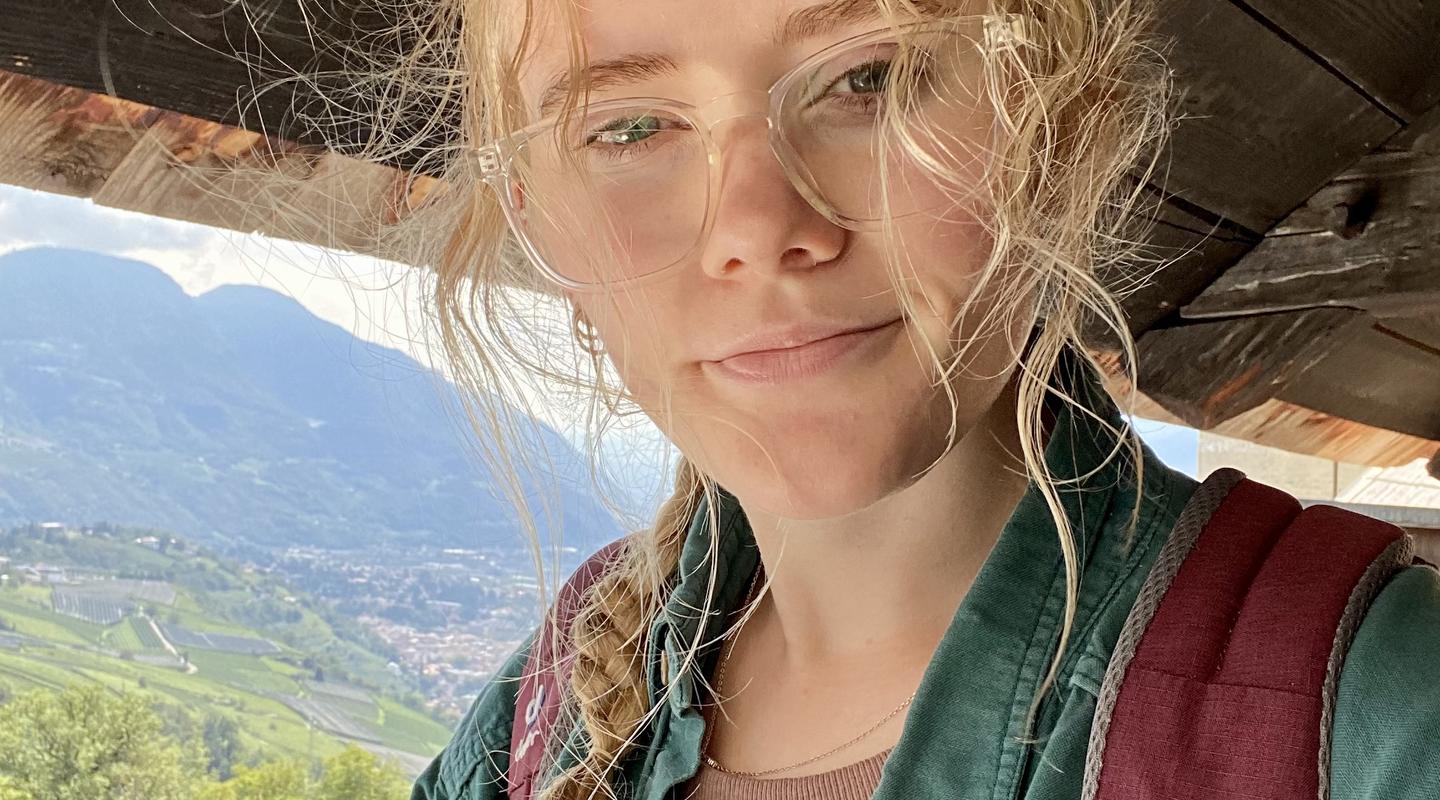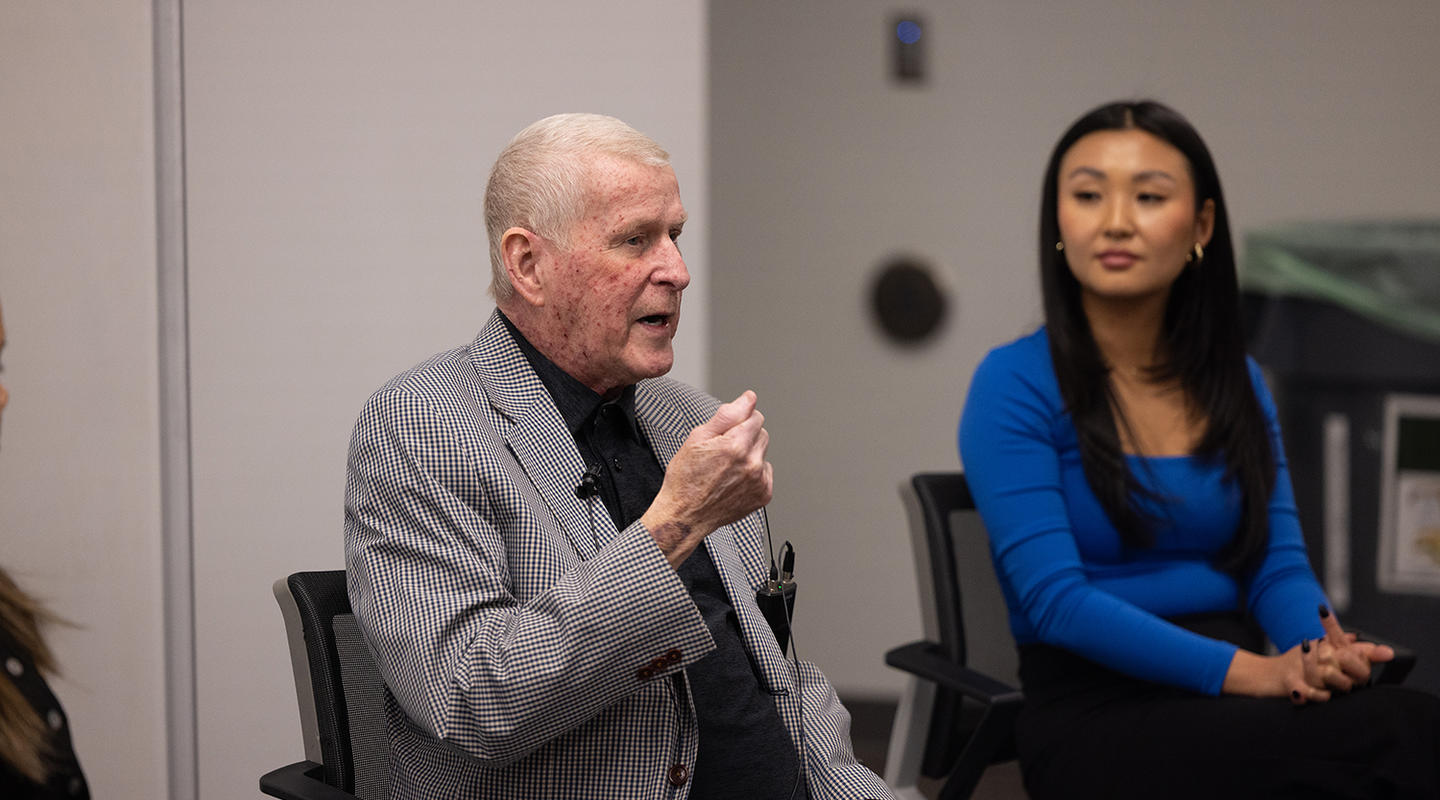
Lab services coordinator Lyndon Ramrattan and Helen Chen with a batch of white chocolate. (Courtesy of Helen Chen)
Walk past Room 112 in the Engineering Building on the University of Minnesota Duluth (UMD) campus, and you might smell fresh-baked brownies. But that deep, rich smell isn’t coming from a secret oven, it’s coming from cocoa beans being roasted in the Chocolate Lab. For chemical engineering students Ian Keller and Helen Chen and their classmates, making chocolate is a hands-on—and delicious—way to apply the principles they learn in class.
Keller, who will graduate in May with a degree in chemical engineering, and Chen, a sophomore studying chemical engineering, are members of the Chocolate Club at UMD and spend several hours each week making chocolate. “I’m in my second year, so I haven’t had a huge workload of engineering courses,” Chen says, “but I’m able to see how what I have learned fits into the process. It’s definitely cool to see that.”
Creating the lab
It was over a cup of cocoa tea in 2016 that Steven Sternberg, associate professor of chemical engineering, got the idea for blending chocolate with chemical engineering. Lab services coordinator Lyndon Ramrattan, who is from Trinidad, introduced Sternberg to the beverage, which Ramrattan made with cocoa beans grown on his family’s property.
Sternberg, who has taught nearly all core chemical engineering courses at UMD, started looking for his own bean supply for tea and came across the Chocolate Alchemy website, which provides advice and instructions on how to make chocolate. “I realized every step they did was a standard chemical engineering step we teach in our courses,’” he says.
Sternberg and Ramrattan secured a grant to buy equipment and materials. They set up the first Chocolate Lab in a small closet. “Within a day, students wanted to be in on it,” Sternberg says of chocolate making. “You roast the beans and the smell goes into the hallway, and that generates a lot of excitement.”
Sternberg and Ramrattan, who oversee the lab, eventually moved to a larger space that can accommodate four or five people. Chemical engineering students also formed the Chocolate Club for those interested in working in the lab. “It’s not part of a class,” Sternberg says. “It’s a fun thing that also exposes them to the business world.”
Club members who go through specialized safety training can be in charge of the lab without faculty present. They also learn about the importance of taking care of the equipment, paying bills, etc.
“The Chocolate Lab has given me opportunities to work with people who I might not normally work with and solve problems in an independent environment where we can use our own judgement, which gives a good understanding of how to approach process development,” Keller says.
Trinidad connection
In addition, Sternberg and Ramrattan have offered a study abroad experience in Trinidad for chemical engineering students. Over winter break, they meet farmers and take part in caring for cocoa trees, harvesting cocoa pods, and collecting and fermenting seeds. “Fermentation is another good chemical engineering operation,” Sternberg says. Once fermented, the beans are placed on a mesh table to dry, which takes up to 10 days. “Open-air drying is another chemical engineering step we talk about,” he says.
In addition to preparing beans, students learned about life in Trinidad. For Keller, who was part of the last trip in 2021, it was his first time traveling outside the United States. “I took away a different perspective on the world, and a new passion for making chocolate that I hope to continue on with,” he says.
When plans for a trip in December 2023 fell through because the cost had increased substantially, a donor stepped in to make a gift that would help ensure future study abroad experiences and allow for the purchase of equipment and supplies. “The donor saw the usefulness of immersing oneself in other countries,” Sternberg says.
He explains that when people like the donor see and learn about the connections between chemical engineering and making chocolate, they get excited. “I think people understand what a privilege it is to have the lab,” Sternberg says.
Support the UMD Chocolate Lab.


